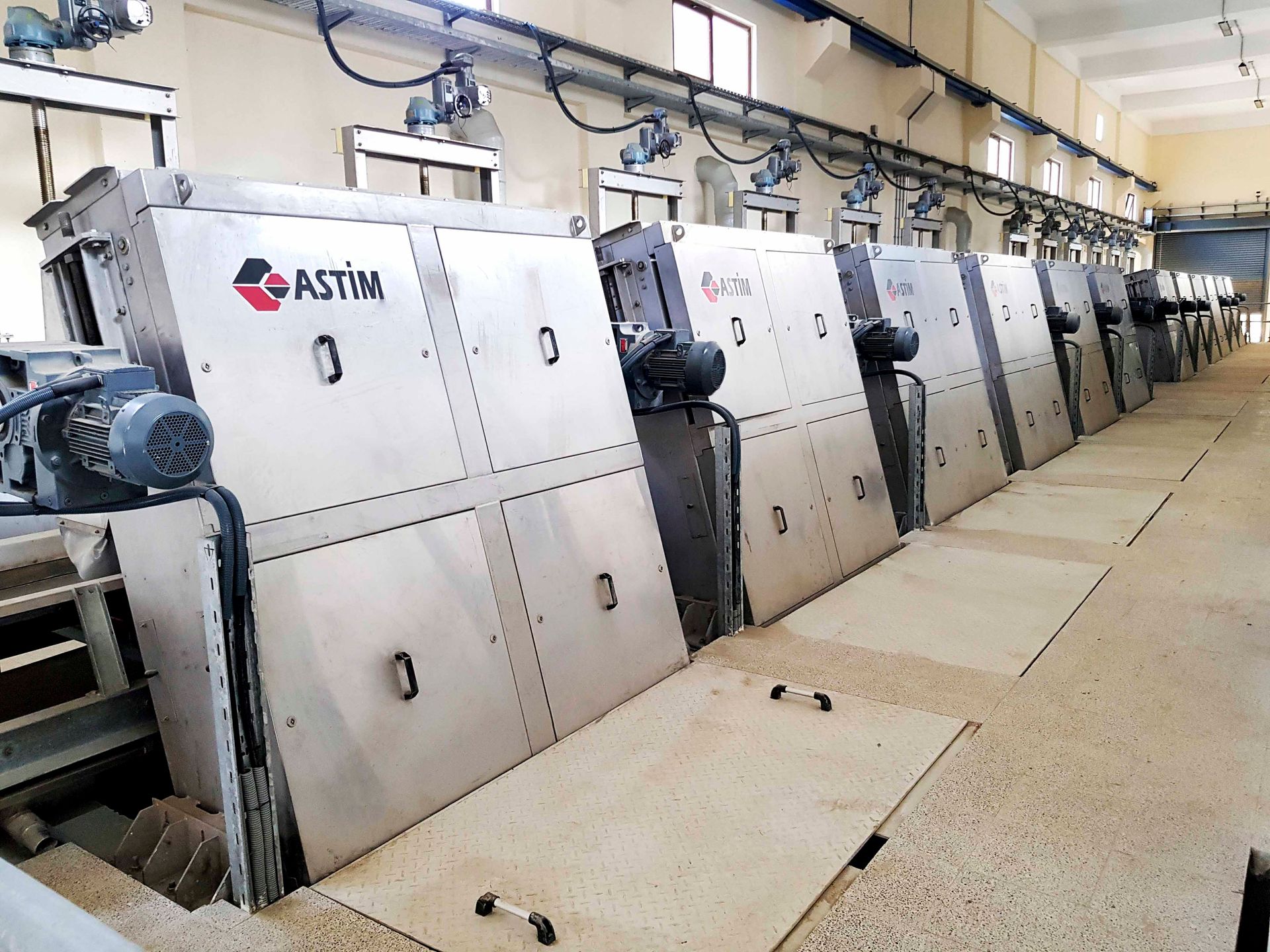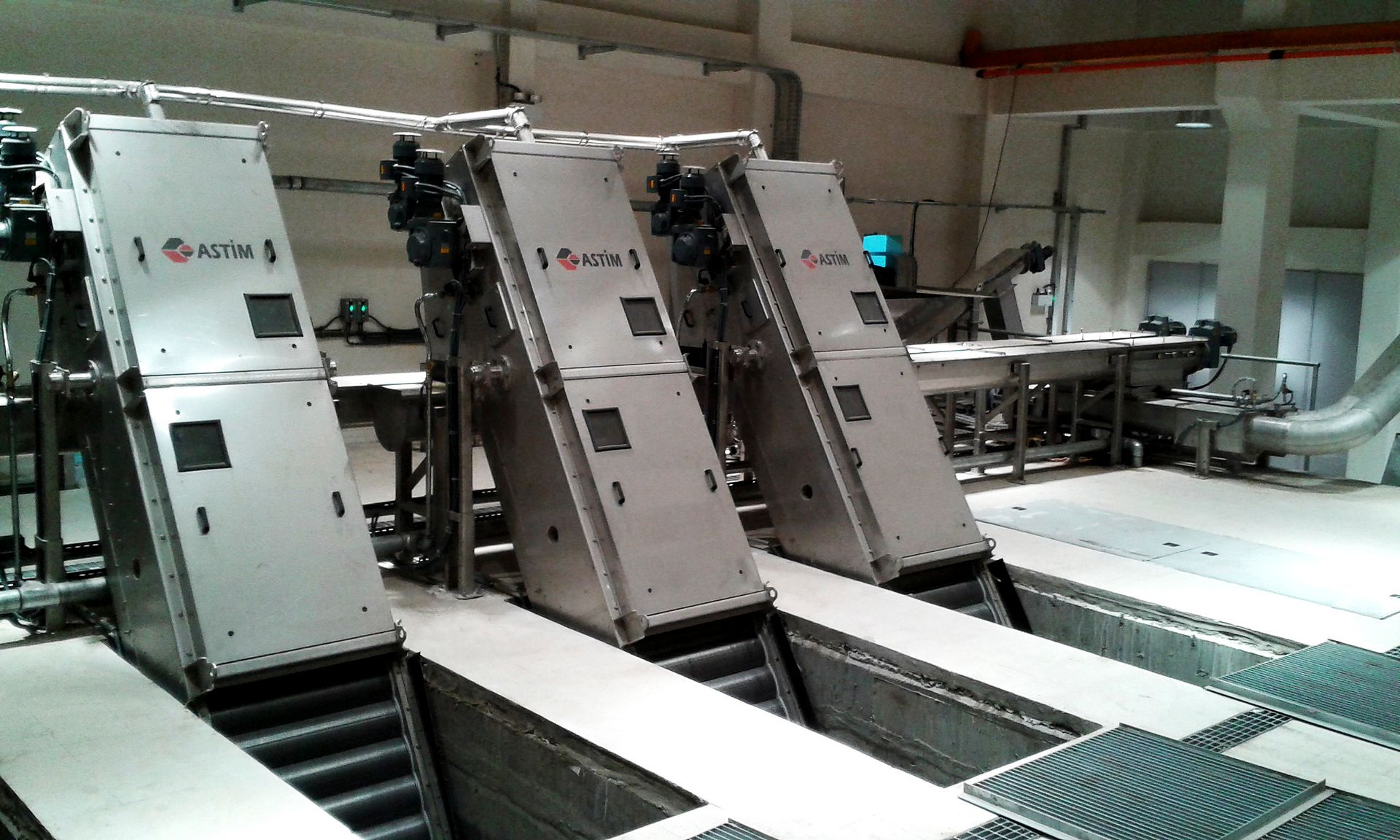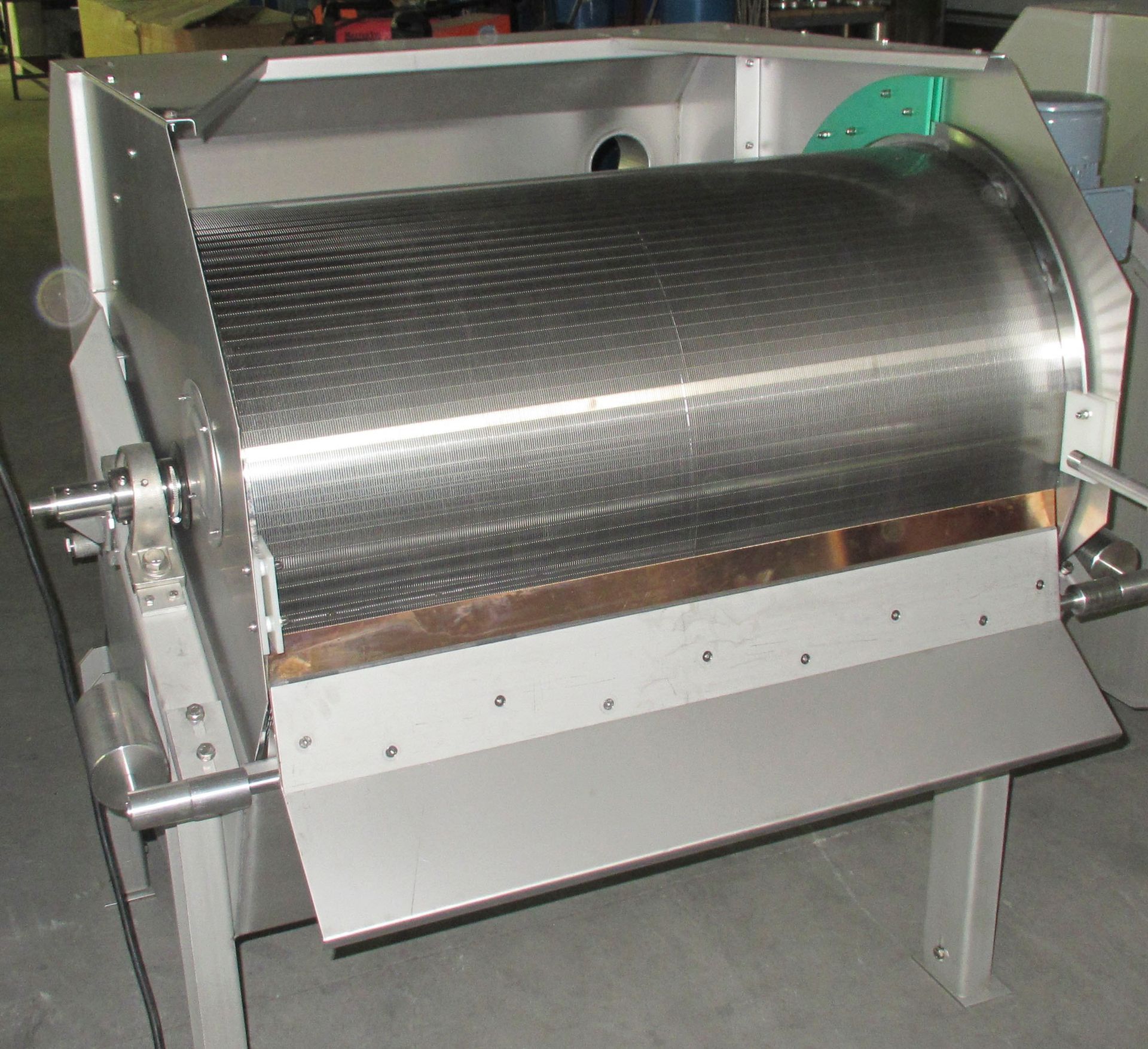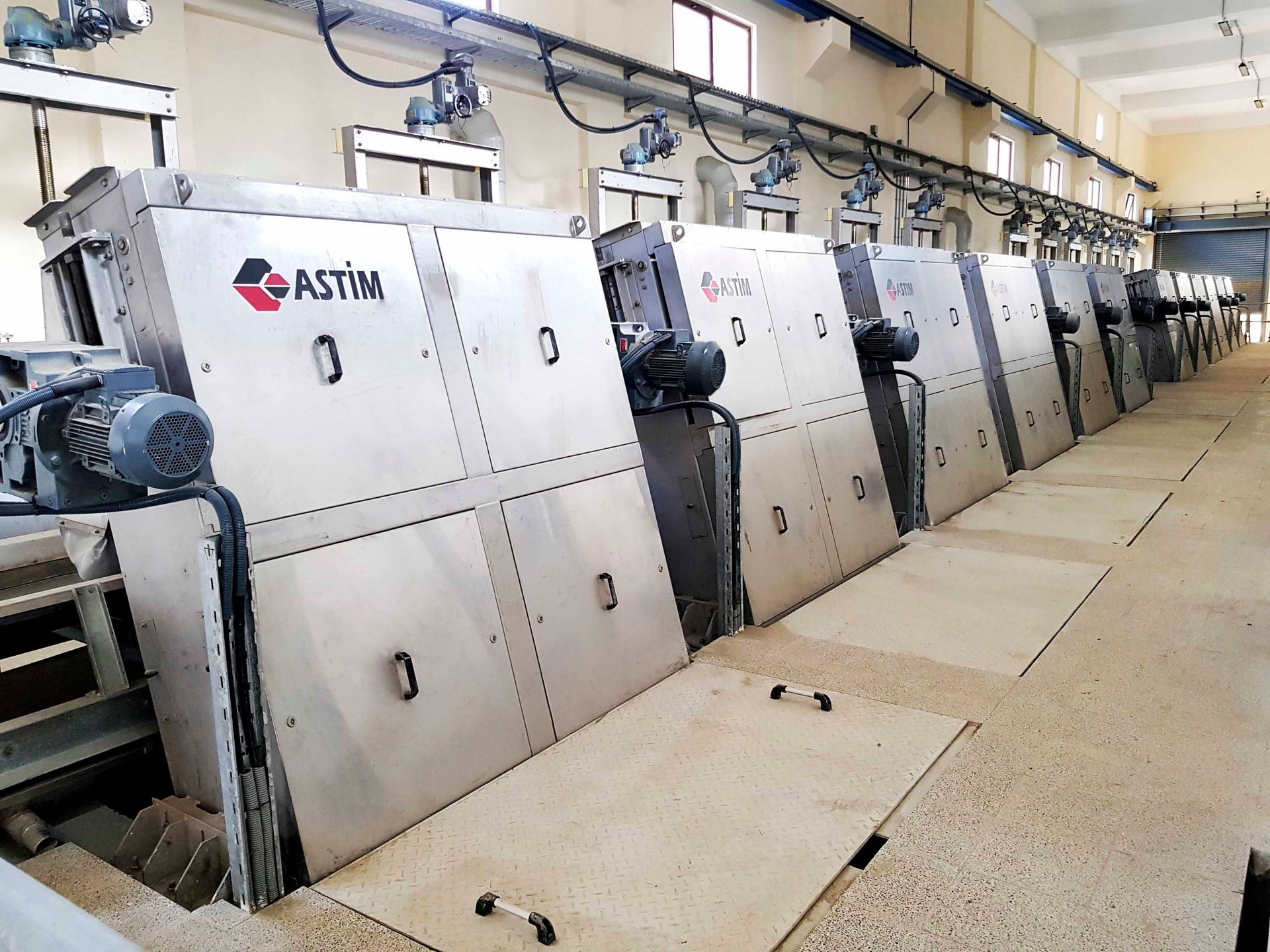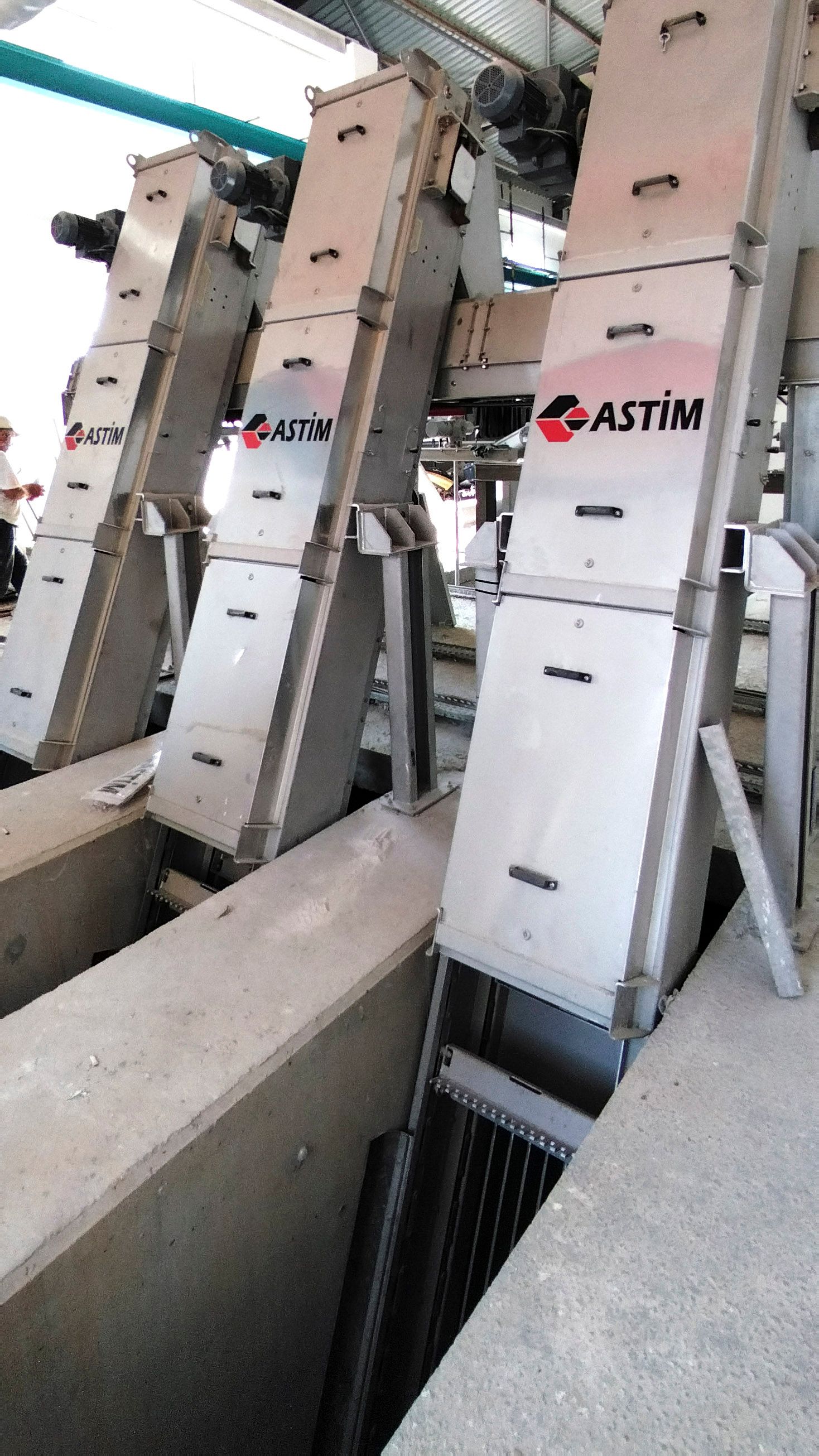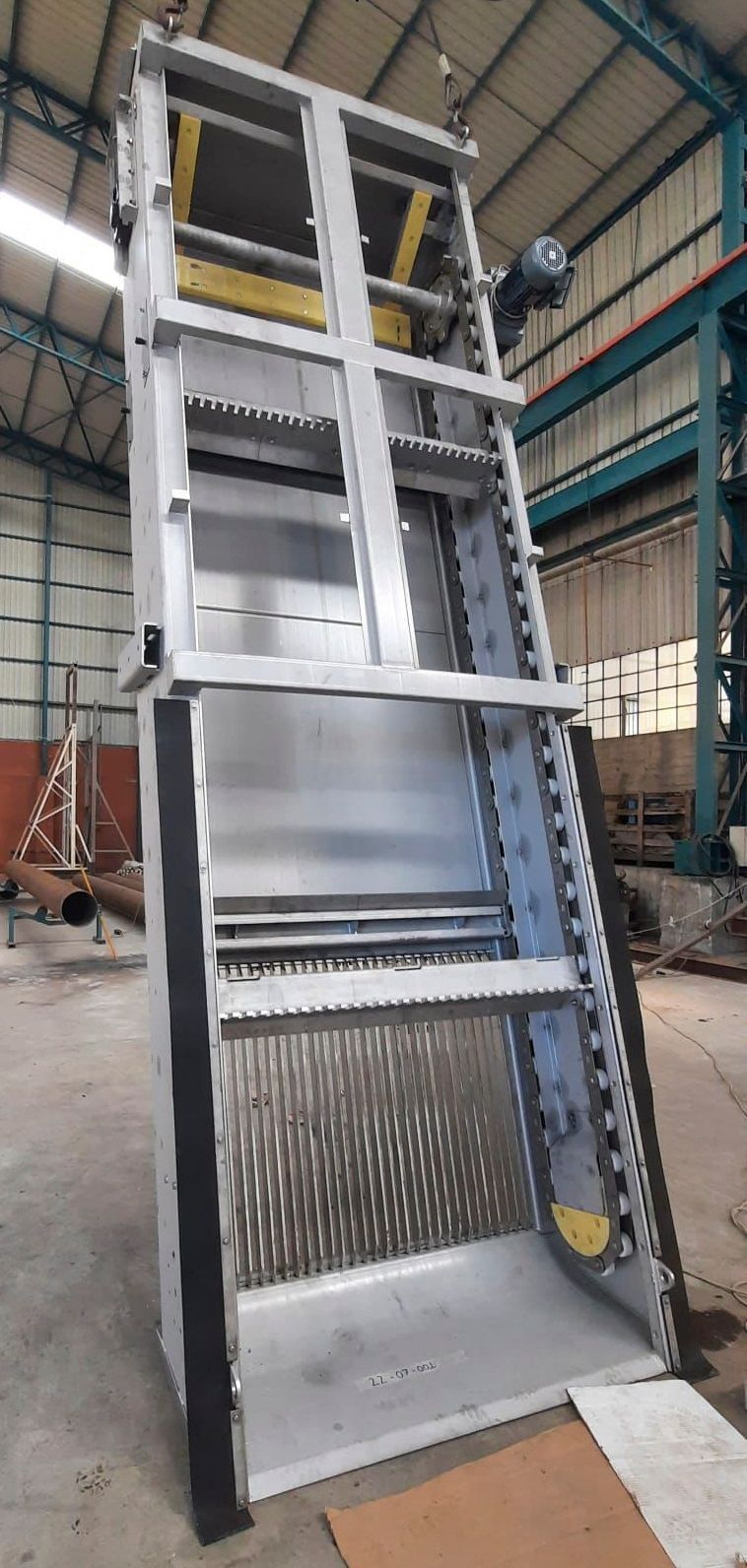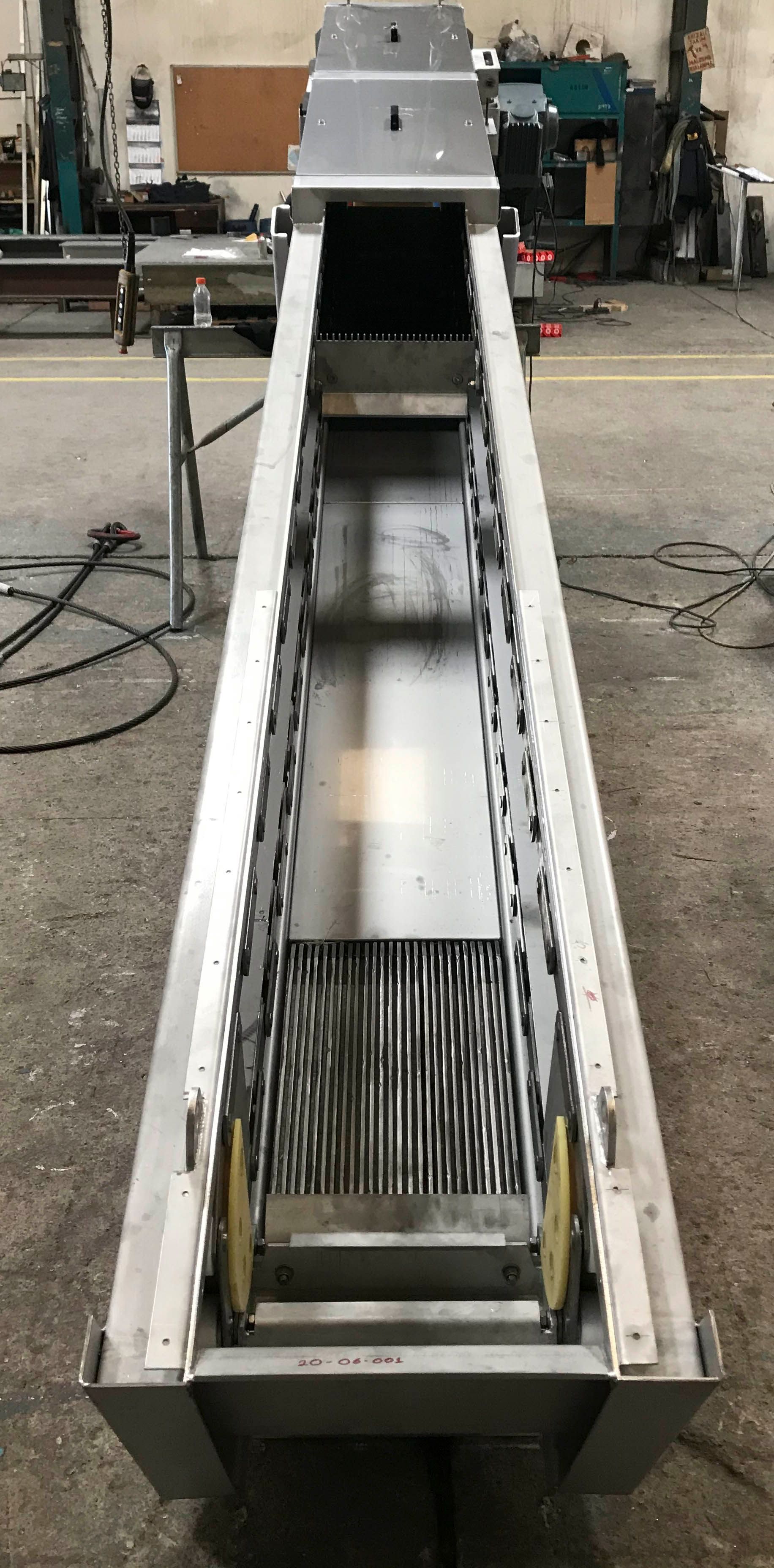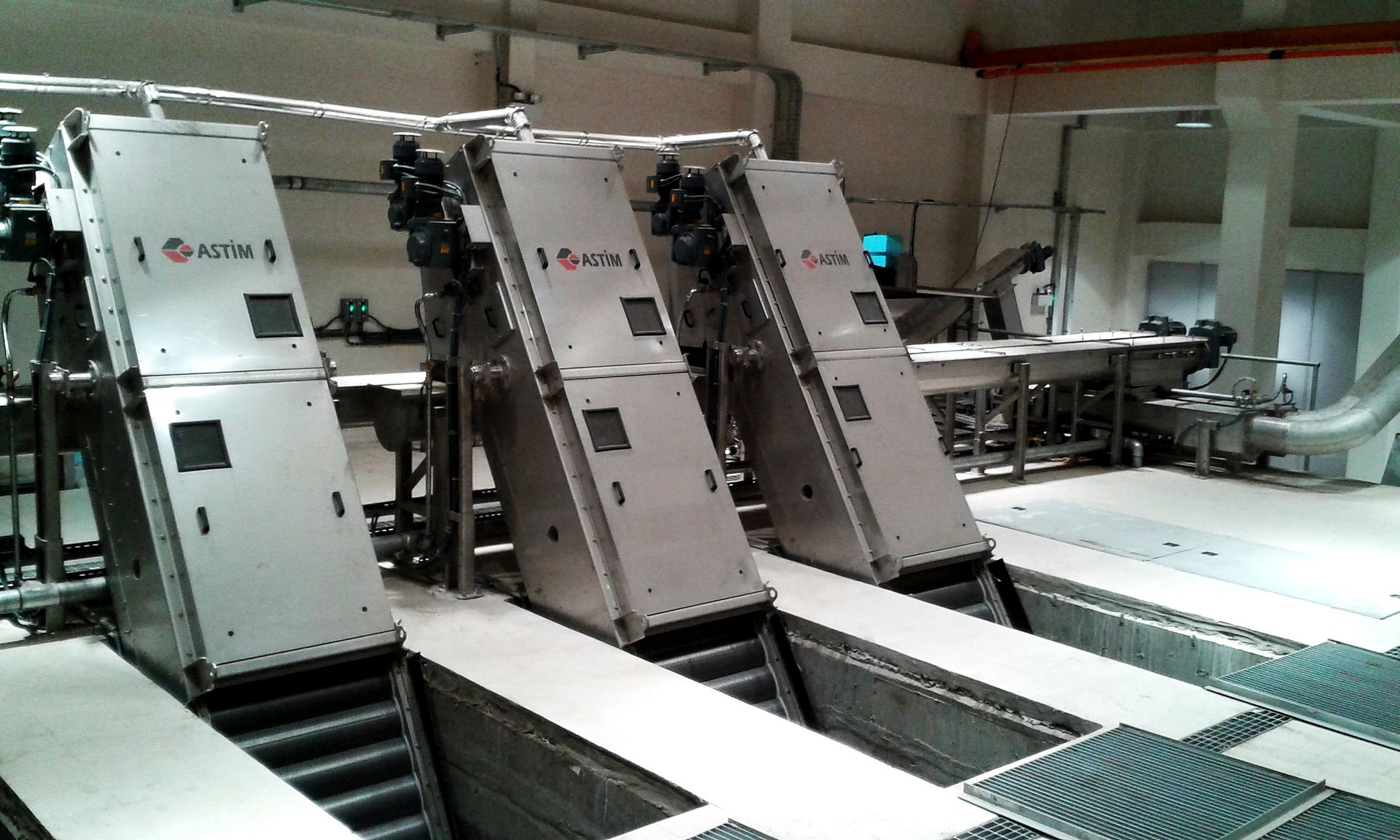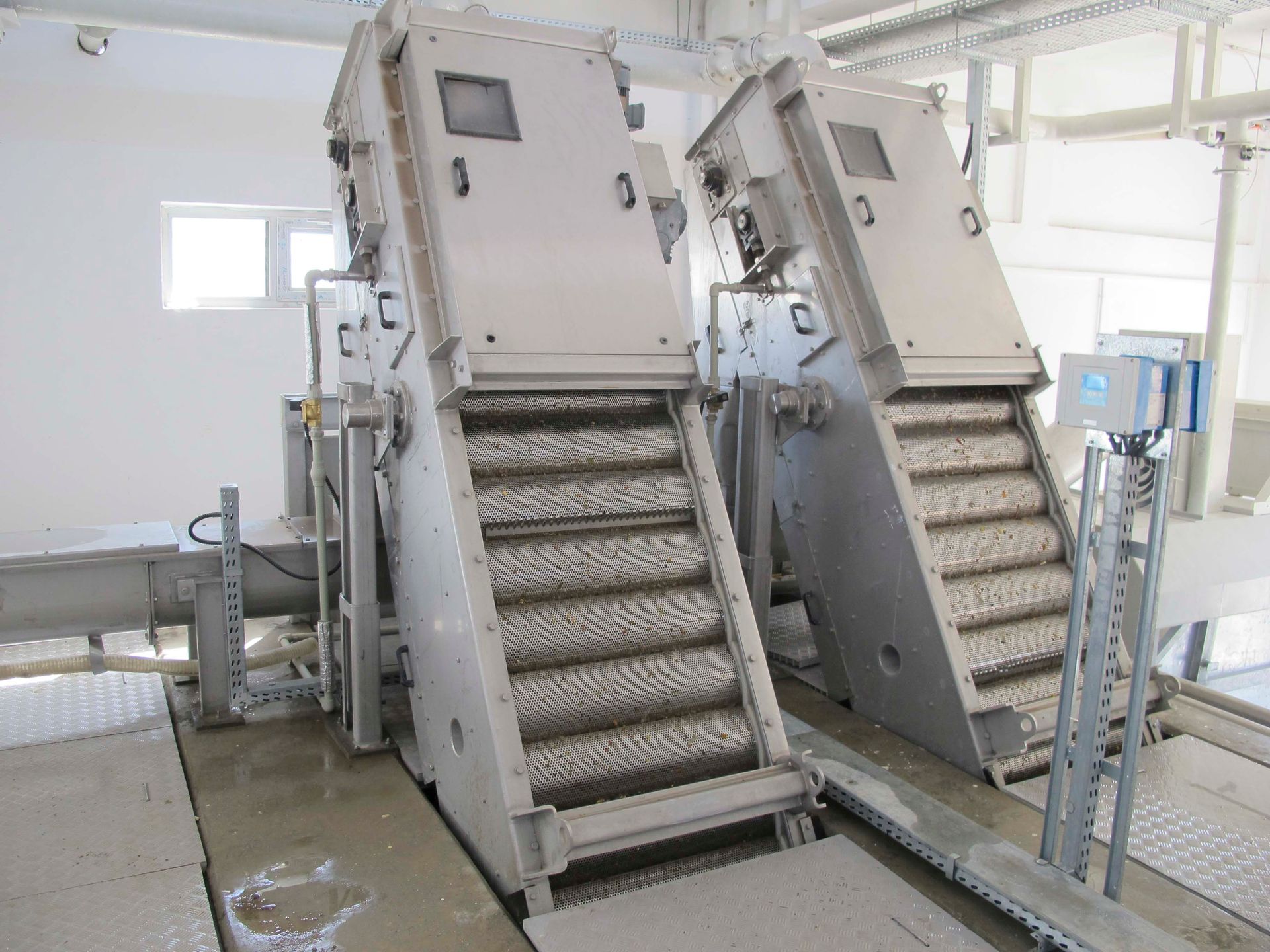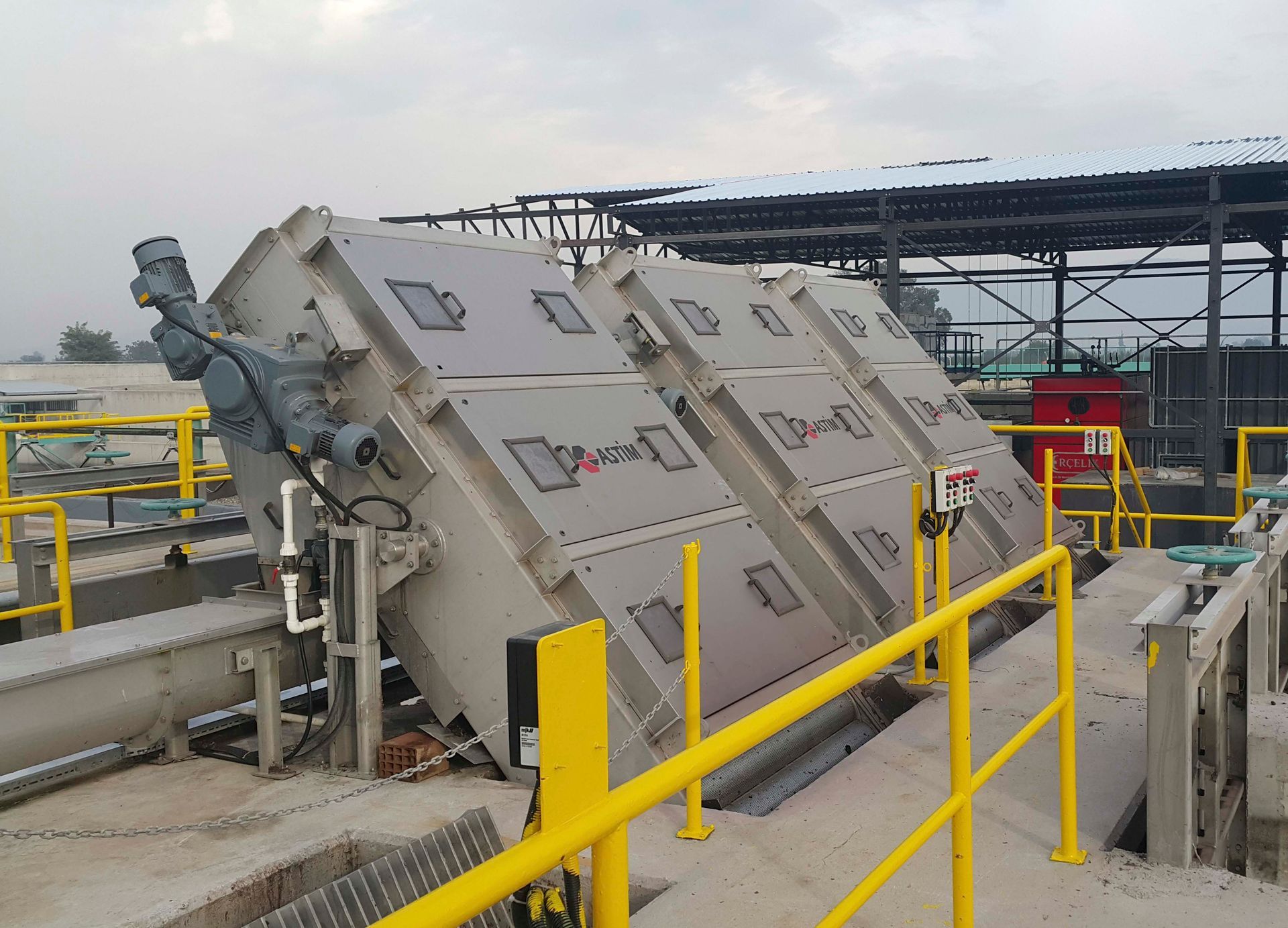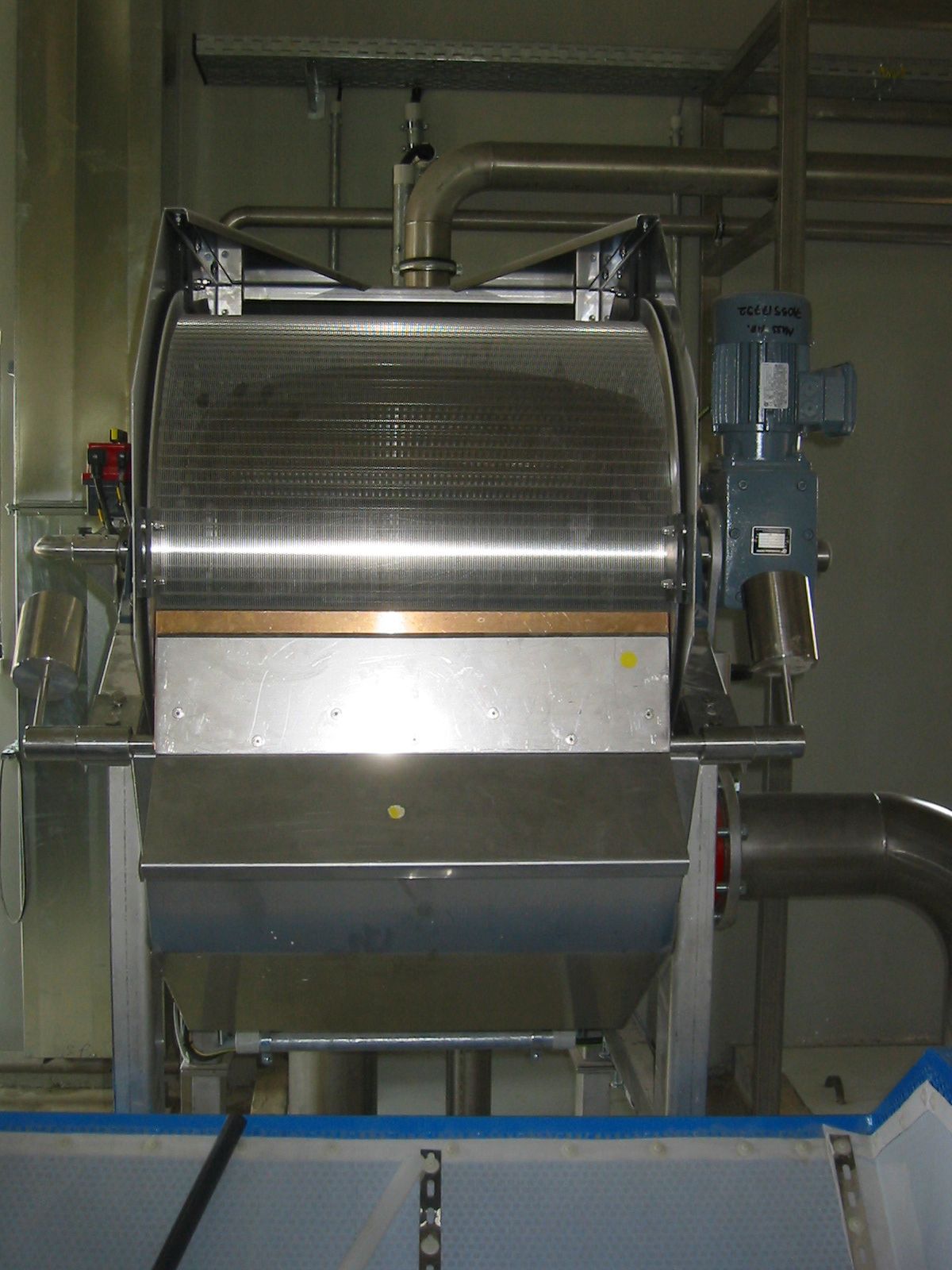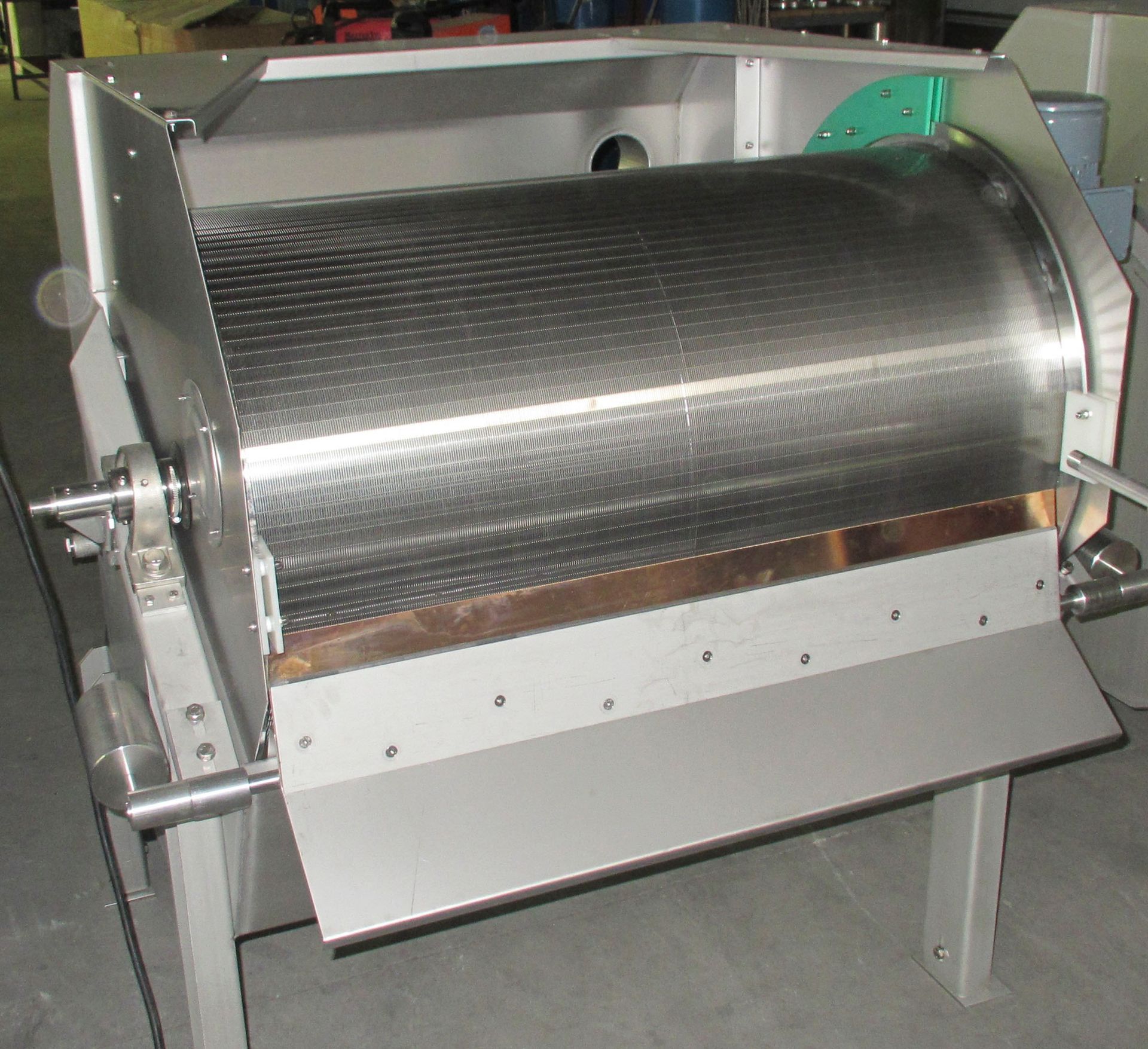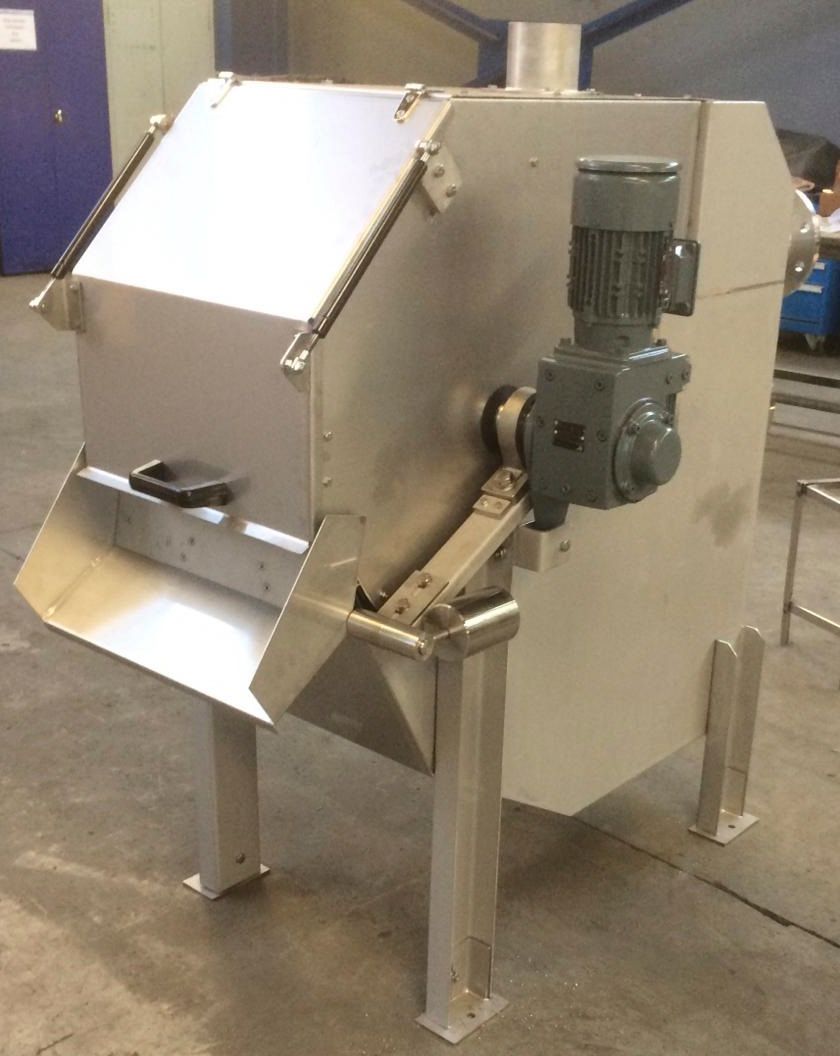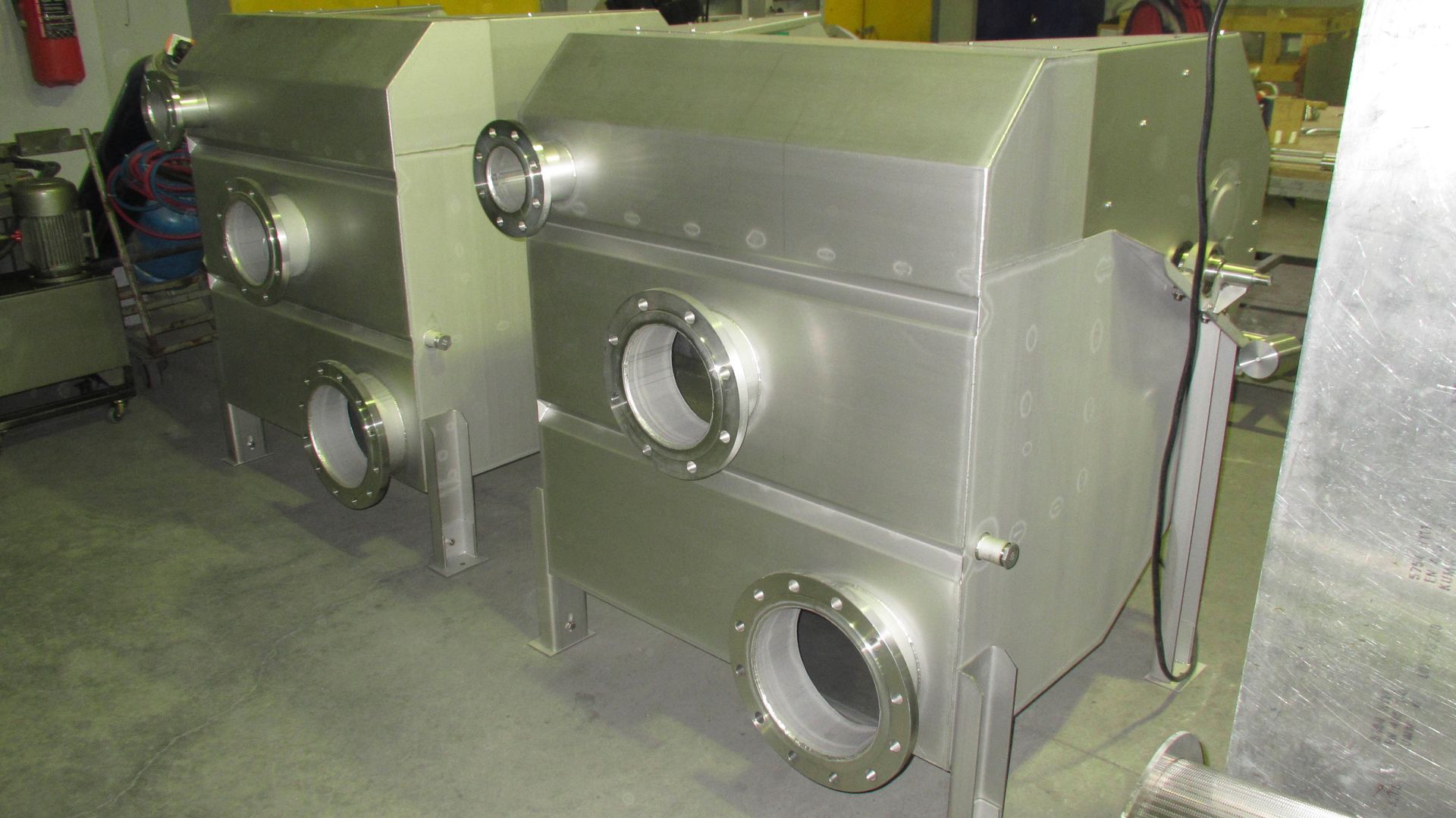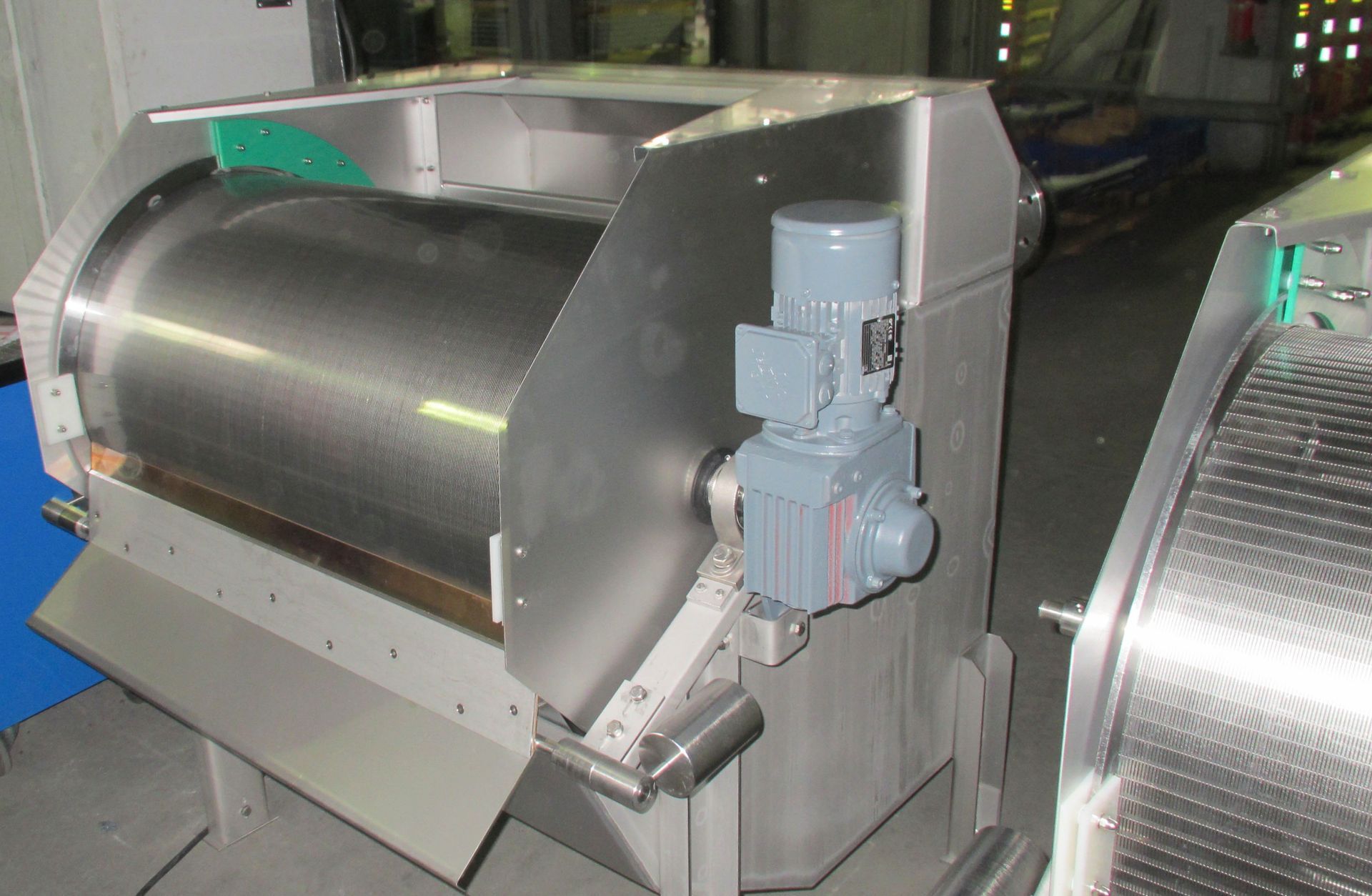SCREENS
For separating coarse contaminants from wastewater
Screens are an important part of the mechanical pre-treatment of wastewater in municipal and industrial wastewater treatment plants. By removing coarse and sediment from the wastewater, the downstream treatment stages are relieved and technical units, e.g. pumps, are protected from blockages and wear. They remove all substances in the sewage treatment plant inlet that are larger than the gap and mesh size used.
Multi-Rake Bar Screen
The Multi-Rake Bar Screen essentially consists of a steel frame, bar screens, chain-driven cleaning rakes and a geared motor. The wastewater flows through the bar screens with a defined bar spacing, whereby coarser solids such as stones, wood or other civilization waste are retained. The chain-driven cleaning rakes clean the screen surface and transport the solids to the discharge, where they are detached from the rake by means of scrapers and discharged into a container or conveyor via a chute. Whether as a coarse or fine screen, the possible applications are very versatile.
Features:
- ·Gap widths from 6 - 60 mm
- Channel widths from 600 - 3000 mm
- Discharge height up to 15 m above channel bottom
- Installation angle from 70° - 85°
- Materials: Stainless steel A2 / A4
The Perforated-Belt Screen has a very high separation efficiency. It is mainly used as a fine screen for large and medium-sized municipal and industrial wastewater treatment plants. Perforated plates offer superior separation performance compared to bar screens, especially for fine screening. They are also able to retain large quantities of gravel, sand and grit. In addition, the screen elements prevent particularly long fibers from passing through the screen and thus achieve maximum separation efficiency.
The wastewater flows through the perforated stainless-steel plates and the contaminants are filtered out. The rotation of the endless perforated plate belt in the channel slowly separates the screenings from the water flow. Rake bars, which are arranged at intervals across the entire screen width and have an appropriately selected installation angle, prevent the retained screenings from rolling. The rake bars ensure that even larger items such as bottles are removed from the channel.
At the upper deflection point, the perforated plates are continuously cleaned by a fast, counter-rotating brush, which significantly improves the cleaning performance. Cleaning is additionally supported by an integrated spray bar.
Perforated-Belt Screen
Features:
- Screen perforation from 2 - 12 mm
- Channel widths from 400 - 3000 mm
- Discharge height up to 10 m above channel bottom
- Installation angle from 60° - 75°
- Materials: Stainless steel A2 / A4
Rotary Drum Screen
The externally fed drum screen consists of a stainless steel tank with feet, an internal slotted screen drum with spray bar, a scraper blade and a geared motor to rotate the drum. The wastewater flows into the tank from the rear and then flows through the drum from the outside to the inside. Solids that are larger than the selected gap width collect on the surface of the drum and are carried along by the uniform rotation and removed at the front by a scraper blade. In addition, the drum can be rinsed continuously or intermittently via an internal spray bar to achieve optimum cleaning of the slotted screen drum. The filtrate flows out through the drain connection at the rear. The drum screen can be supplied with or without a cover. The screen is mainly used in industrial wastewater treatment.
- Slot widths from 0,25 – 2,5 mm
- Materials: Stainless-Steel A2 / A4
Features:


